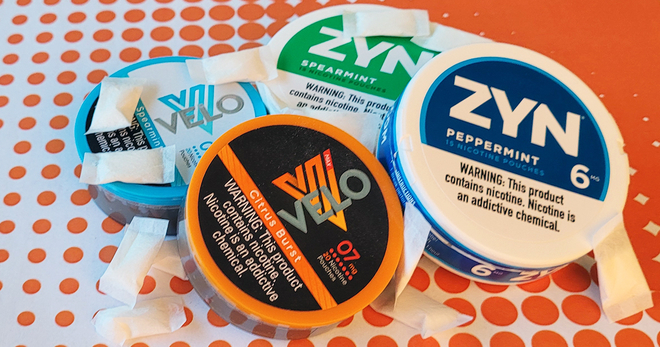Stronger flavor policies, better outcomes for young people
New research underscores that strong flavored tobacco sales restrictions are linked to lower youth tobacco use, yet most young people – especially Black, non-Hispanic young people – remain unprotected, underscoring the need for equitable policy coverage.
The study, published in JNCI Monographs, found that young people who live in areas with strong flavor policies have a lower prevalence of tobacco product use, including flavored products, compared with those who are unprotected by flavored tobacco laws. The study also found that comprehensive policies have a stronger protective effect for young people compared with partial policies with major exemptions.

This study builds on established research on the effectiveness of strong flavored tobacco restrictions for reducing youth tobacco use. However, only 157 of 418 jurisdictions have a comprehensive policy to restrict flavored tobacco products, leaving most young people unprotected by policies shown to have a stronger protective effect. Gaps in policy coverage along race and ethnicity also play a role in widening existing disparities in tobacco use and tobacco-related death and disease.
To reduce tobacco use among young people, more comprehensive policies to restrict youth-appealing flavors are needed – especially in states with higher prevalence of youth tobacco use and wider health equity disparities.
Most young people are not covered by strong policies to restrict flavored tobacco, with gaps along race and ethnicity
Among the participants in the study, most (80.9%) lived in an area with no flavored tobacco restrictions. A much smaller portion (11.0%) lived in an area with a partial policy, and only 8.0% lived in an area with a strong policy with minor or no exemptions. Current tobacco use differed based on policy coverage, with a higher prevalence of use among respondents living in areas with no policies (16.9%) compared with respondents living in areas with strong (11.7%) policies.
The study also found that policy coverage varied by several demographic characteristics, including race and ethnicity. The proportion of participants covered by strong flavored tobacco policies was higher among Asian or Hispanic or Latino participants and lower among Black or White participants. In addition, the proportion of participants covered by a strong policy was higher among those who reported no household e-cigarette exposure compared with those who reported household exposure.
In addition, among participants in the study, a higher prevalence of current tobacco use was found among those who identified as LGBTQ+ or Black or African American – consistent with established research on tobacco use in LGBTQ+ and Black American communities.
Strong flavored tobacco policies are effective in lowering youth e-cigarette use, yet enforcement remains a concern
This study found that comprehensive policies that prohibit the sale of all flavored tobacco products, including menthol cigarettes, were associated with significantly lower odds of tobacco use among young people compared to having no policy. Partial policies, however, were not associated with lower odds of youth and young adult tobacco use when compared to areas with no policy. Restricting the availability of all flavored tobacco products has the potential to minimize substitutions with other flavored products, reduce exposure to marketing, and change social norms.
The impact of strong flavor policies has been well documented, especially in states with particularly comprehensive policies such as California and Massachusetts. In California, flavored e-cigarette sales decreased by 67% in the year following the adoption of a strong flavored tobacco policy, and in Massachusetts, a flavor policy led to an 86% decline in total e-cigarette sales with a 98% decrease in sales of flavored e-cigarettes.
These policies were particularly successful due to their comprehensive scope, solid foundation of existing local policies, and emphasis on strengthening enforcement measures. However, with flavored products accessible online (where age restrictions are easily evaded) and on social media, enforcement is a challenge. According to a study of young adults in Massachusetts, only one out of 15 young adult ever-users of flavored tobacco believed that it would be hard for them to acquire flavored tobacco products – with one participant saying, “I'm sure within 5 minutes I can find someone that will be selling it.”
To fully realize the intended impact of strong flavor policies, action must be taken to prevent online tobacco retailers and social media platforms from distributing products in areas with flavored tobacco restrictions. Retailers should also act by removing products that violate regulations from their shelves.
More in emerging tobacco products
Want support quitting? Join EX Program
By clicking JOIN, you agree to the Terms, Text Message Terms and Privacy Policy.
Msg&Data rates may apply; msgs are automated.



